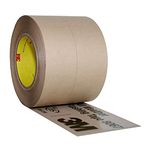Convenience vs. energy consumption
The Kitchens & Baths issue (FHB #191) included a feature on warming a granite kitchen countertop, as well as a separate article on choosing energy-efficient appliances. As long as our culture is worried about cold elbows on countertops, we cannot reduce energy consumption to any appreciable degree, despite Energy Star-labeled appliances.
Ours is a gadget culture. Who can fault the architect who had the heated countertop installed? He was just pleasing his clients. I have installed a sink-top mini electric instant water heater for a customer. The blasted thing cycles continuously day and night, and is seldom used.
We don’t have to return to hunting and gathering. Our appliances enable us to store, cook, and clean up after meals safely and conveniently. However, if we want to curb energy usage, we need to have some limits on how persnickety we are.
—Jonathan Harris, via email
Use carbide cutters for finger-jointed trim
When I read “Paint-Grade Interior Trim” by Chris Ermides (FHB #193), a few points came to mind with regard to fingerjointed primed lumber.
First, my experience has shown that molding finger-jointed lumber can yield nice results. However, I had to destroy a couple of new, finely honed cutters before I learned the secret. It seems that the standard M-2 steel that my molding knives were made of literally didn’t cut it. I’m not sure if the glue was the root of the problem, or the primer, or perhaps a combination of the two. The knives did, however, produce a wonderfully uniform burnt-wood patina. The answer for me has been carbide knives from a trusted supplier.
Second, compared to solid wood, I’ve found that thicknesses of finger-jointed stock can vary and not produce the desired result (i.e., 1x stock can be 5/8 in. or 11/16 in.).
Third, in most cases, the applied finish is a blessing for the painter. But be aware that if you mill a profile, the raw wood can show a slight contrast to the preprimed surface, even after priming and painting.
Last, having to accept whatever lengths of solid-wood moldings my supplier is trying to unload can be an exercise in patience. The standard 16-ft. length of finger-jointed stock, for me at least, proves to be a good fit.
—Warren Coolidge, via email
Manufactured stone needs to drain
The cover article in the December/January issue, “Working With Manufactured Stone” (FHB #192) overlooks one of the mysterious details: how the stone meets, or does not meet, the ground. At the Cultured Stone Web site (www.culturedstone.com), Owens Corning makes it clear that the stone may not touch the ground. A separation distance of not less than 4 in. must be maintained (2-in. separation from pavement). Manufactured stone is more like stucco in this regard than stone. Ground contact prevents rain-soaked manufactured stone from draining.
Visually, this is quite a problem. What does the author recommend occur in this 4-in. gap between the bottom of the stone and the ground? What happens when the ground slopes along the building line? Does the line along the bottom of the stone slope, too? This issue certainly undermines the “real” appearance of the stone.
—Joel Schwartz, via email
Author Brendan Mostecki replies: You’re right; manufactured stone should never be in contact with the grade, a guideline that I should have stated clearly. The stone installation featured in the article was part of a whole-house remodeling project that included excavating around the foundation and backfilling with crushed rock 2 ft. to 3 ft. out from the foundation in lieu of roof gutters. The crushed rock beneath the manufactured stone allows it to drain.
We used the existing grade to start our base course in some areas, and in others, we used 2x4s to elevate the stone above grade. The stone definitely follows the grade, and in some locations, our customers did not want a 4-in. foundation reveal. They wanted the stone down to grade on piers, stairs, and the front of the home.
All contractors, including masons, are in the catering business. We want happy customers, so we cater to them. I always point out that the manufacturer does not recommend the stone coming down to grade, nor do I. But I believe the crushed-rock backfill eliminates much likelihood of a problem.
A toboggan tip
We read the tip about removing dirt from a crawlspace (FHB #193) and had to laugh out loud. Some years ago, we did the same thing, using a kid’s plastic toboggan with ropes on both ends and carrying three galvanized buckets. We needed to remove dirt to increase the depth of the crawlspace under our house. We finally thought to measure how much earth we were moving on our last section, below the dining room: 8 cu. yd. Toboggans are a lot more flexible than rollers and are impervious to the terrain, even bumping around corners. Toboggans are a lot cheaper, too.
—Pat Hartz and George Halpin, Owings Mills, Md.
Put the leaf seal on the window’s upper sash
John Michael Davis provided an excellent primer on how to tune up old double-hung windows (FHB #192). As a restoration carpenter of 30 years, using similar techniques and products, I have found that just about any window can be made weathertight. I do, however, disagree with Mr. Davis on one detail.
I have found that placing a leaf seal on the lower sash’s meeting rail as shown could cause problems. The sash-lock keeper (mounted on the upper sash) can catch the leaf seal when the lower sash is lifted. If the upper sash is multipane, the leaf seal also can catch on the horizontal muntin bars. For this reason, I place the seal on the upper-sash meeting rail. Nothing catches, but the seal is visible to the interior when the window is raised.
—Stephen Ortado, Washington, D. C.
Where is thicker fiber-cement siding made?
I found Larry Haun’s article on fiber-cement tools in the last issue to be helpful (FHB #193), but I’m curious as to where he finds fiber-cement lap siding in thicknesses other than 5/16 in. I’ve never seen fiber-cement lap siding in the 1/2-in. or 5/8-in. dimensions that he mentions. Can you provide the name of the manufacturer?
—Don Marty, Verona, Wis.
Associate editor Justin Fink replies: Thicker fiber-cement planks aren’t common, or at least they’re not commonly stocked in lumberyards. The Artisan series of siding, made by James Hardie (www.jameshardie.com), is actually 5/8 in. thick, which creates nice shadowlines. That said, the description of the available sizes on p. 85 should have read that a 5/16-in.-thick plank sells for about $8. We listed it as a 1/2-in. plank. Sorry for the confusion.
In favor of green
I could not let the letter by Matt Miller about canceling his subscription go unanswered (FHB #192). I have enjoyed Fine Homebuilding for a few years, but have usually purchased it at the newsstand. For what it’s worth, I just subscribed to FHB, so you can count that as a vote for more green-building tips.
—Roch Comeau, Montreal, Québec
Beware of outlet orientation
Rex Cauldwell (“Q&A,” FHB #193) makes logical suggestions about the best way to orient outlets, and I suspect the scheme he suggests is marginally safer. Electricians who do it his way, though, should probably be ready for customer gripes. More and more extension cords and devices now have flat or immediate-return plugs, and devices that plug directly into outlets often have grounded or polarized plugs. Like it or not, virtually all these plugs are oriented the opposite way that Rex suggests, and long-standing custom is at odds with his logical approach. Just another example of unfairness in the building trade.
—Ben Zarlingo, via email
A terminological hiccup
In my “What’s The Difference?” article on rope (FHB #193), long-suffering assistant editor Rob Yagid worked valiantly to condense my long-winded text into something that would fit between the covers of a single issue, not an easy task, as any editor who has worked with me will tell you. During this process, the phrase rope chandler somehow lodged itself in the final version, and I failed to notice it when Rob sent the author’s proof before the issue went to print.
Unfortunately, there is no such thing as a rope chandler, as anyone familiar with maritime matters knows. Rope is manufactured in a facility known as a rope walk, and it is usually sold, at least for marine use, by a ship chandler. But of rope chandleries, Neptune speaks not at all.
My apologies to readers who may have been confused by this terminological hiccup.
—T.H. Richards, Mont-Tremblant, Québec
Fine Homebuilding Recommended Products
Fine Homebuilding receives a commission for items purchased through links on this site, including Amazon Associates and other affiliate advertising programs.

Affordable IR Camera

Reliable Crimp Connectors

8067 All-Weather Flashing Tape






















